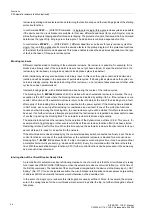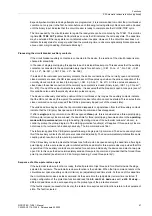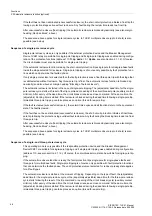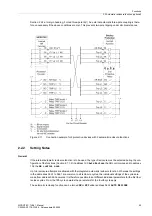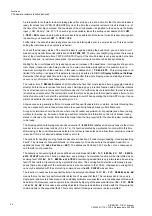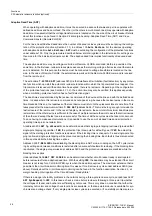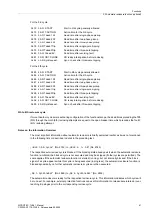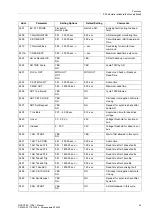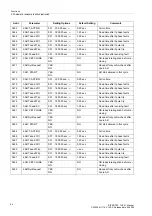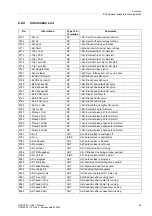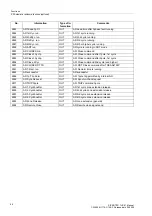
Functions
2.2 Automatic reclosure function (optional)
SIPROTEC, 7VK61, Manual
C53000-G1176-C159-3, Release date 05.2009
52
As is shown by the example, the adaptive dead time has the following advantages:
• The circuit breaker at position II is not reclosed at all if the fault persists and is not unnecessarily stressed
as a result.
• With non-selective tripping on an external fault by an overreaching time-graded protection, no further auto-
reclosure attempts can be generated there because the fault current path via busbar B and position II
remains interrupted even after several reclosure attempts.
• At position I, overreach by the time-graded protection is allowed in the case of multiple reclosures and even
in the event of final tripping because the line remains open at position II and therefore no actual overreach
can occur at I.
The adaptive dead time also includes the reduced dead time because the criteria are the same. There is no
need to set the reduced dead time as well.
CLOSE Command Transmission (Remote-CLOSE)
With close command transmission the dead times are also only set at one line end. The other (or the others in
lines with more than two ends) are set to "Adaptive Dead Time (ADT)". The latter just responds to the received
close commands from the transmitting end.
At the sending line end the transmission of the close command is delayed until it is sure that the local reclosure
was successful. This means that after reclosure still a possible local pickup is waited for. This delay prevents
unnecessary closing at the remote end on the one hand but also increases the time until reclosure takes place
there. This is not critical for a single-pole interruption or in radial or meshed networks if no stability problems
are expected under these conditions.
The close command can be transmitted using any suitable teleprotection scheme.
Control of the Automatic Reclosure
It must be decided whether the internal auto-reclosure is to be controlled by the starting (pickup) or by the trip
command of the external protection (see also above under „Control Mode of the Automatic Reclosure“).
If the auto-reclosure is controlled by the
trip command
, the following inputs and outputs are recommended to
be used:
The automatic reclosure function is started via the Binary inputs:
2711
„>AR Start“
General fault detection for the automatic reclosure circuit (only required for
action time),
2712
„>Trip L1 AR“
Trip command L1 for the automatic reclosure circuit,
2713
„>Trip L2 AR“
Trip command L2 for the automatic reclosure circuit,
2714
„>Trip L3 AR“
Trip command L3 for the automatic reclosure circuit.
The general fault detection determines the starting of the action times. It is also necessary if the automatic re-
closure circuit is to detect sequential faults by fault detection. In other cases this input information is superflu-
ous.
The trip commands decide whether the dead time for single-pole or three-pole reclose cycles is activated or
whether the reclosure is blocked in three-pole tripping (depending on the parameterisation of dead times).
Figure 2-8 shows the interconnection between the internal automatic reclosure of 7VK61 and an external pro-
tection device, as a connection example for single-pole cycles.
Summary of Contents for Siprotec 7VK61
Page 8: ...Preface SIPROTEC 7VK61 Manual C53000 G1176 C159 3 Release date 05 2009 8 ...
Page 14: ...Contents SIPROTEC 7VK61 Manual C53000 G1176 C159 3 Release date 05 2009 14 ...
Page 316: ...Literature SIPROTEC 7VK61 Manual C53000 G1176 C159 3 Release date 05 2009 316 ...
Page 328: ...Glossary SIPROTEC 7VK61 Manual C53000 G1176 C159 3 Release date 05 2009 328 ...









